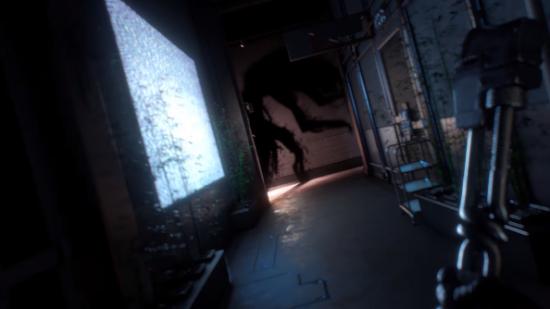Update January 10, 2016: Bethesda have spoken up on the similarities between Dishonored, Arkane’s assassin ’em up, and Prey, their upcoming space survival game, noting that Arkane are developing a game in a genre they’re experienced in.
That genre, of course, is the immersive sim – a catch-all term for games that value choice, simulate AI and the world regardless of the player’s presence, and play out from a first-person perspective. There will be similarities, of course, because creating immersive sims is baked into the studio’s design ethos.
Here’s everything we know about Prey.
“It’s not like we’re working with Arkane and asking them to make racing or rugby games,” said Bethesda marketing head Pete Hines in an interview with OXM. “We’re like, ‘Look, you do really cool, immersive, system-based first-person games.’ Dishonored was just the evolution of the stuff that they had done previously, and now the first look you’ve seen at what they’re doing with Prey is very similar.”
Of course, there are huge differences. Prey takes place in a single, Metroidvania-style environment, where Dishonored and its sequel were split into levels. There’s also going to be more of a horror vibe, and light survival mechanics. It’s a different beast, but it’ll still allow players to experiment with systems and create emergent moments.
“It’s doing some things that are different and cool and unique, but at its core it’s still immersive, first-person, systems-based, non-scripted stuff that encourages player exploration and making choices,” explained Hines. “And that all ties in – I think very well – with what we feel like our identity is at Bethesda.”
For more on how Arkane operate, see our original story below:
Original Story December 21, 2016: Arkane, for my money, are one of the best developers around, focusing on building a type of game that’s rare and difficult to create: the immersive sim. This genre definition has always been a bit vague, but there are some core rules games need to follow to be classed as an immersive sim. They have to be first-person – hence ‘immersive’ – and the world has to tick along like clockwork, whether the player insert themselves into the gears or not. It’s a simulation.
Arkane live by these principles, but they also have a bunch of other core ideals that they stick by to ensure everything they put out is identifiably Arkane. Showing GameInformer around Arkane Studios in Austin, Prey’s creative director Raphael Colantonio and lead designer Ricardo Bare pointed out these design philosophies, dotted around the workspace’s walls in picture frames.
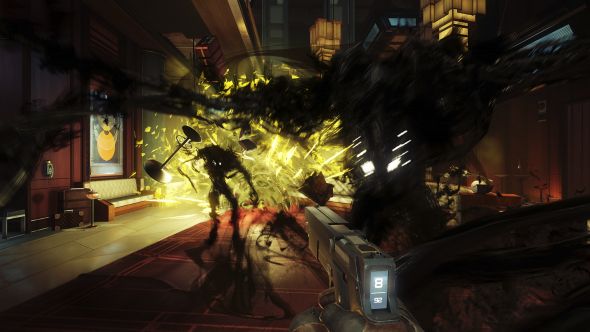
Some of these ideals are specifically for the studio’s next game, Prey, but the majority cover Arkane games in general. With that in mind, here is the bible according to Arkane:
- Multiple paths – sandbox spaces with open-ended circulation, multiple entry points, verticality, crawl spaces.
This is key to an immersive sim – the ability to come at things from multiple angles. It’s what gives the games their replay value and it also makes the player feel like they’ve take a personal journey through each space.
- Well-integrated puzzles – plausible problems to solve, not gimmicky key-lock puzzles with only one solution.
You only have to look at Dishonored 2’s Jindosh lock for a recent example of this. This logic puzzle can be solved with, well, logic, or you can find the solution from multiple NPCs. You can even bypass it altogether.
- Say yes to the player – if it occurs to players, and sounds like fun, let them do it
This tenet is accompanied by a picture of Just Cause 3, with Rico surfing a plane. Essentially, Arkane are against things like wrestling control away from the player so their avatar can do a cool thing in a cutscene. Just let us do it, yeah?
- Ecology – AI interact with each other and the world in interesting ways that can be exploited by the player.
This one will apparently be ramped up in Prey, but you can already see it in Dishonored 2. A simple example is linking two NPCs with Emily’s Domino ability just before one NPC kills another, causing the death of both.
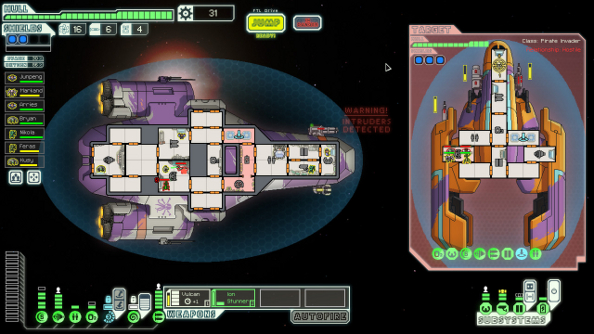
- Dynamic hazards – environmental changes force players and enemies to adapt: solar flares, depressurisation, zero-G, creature population.
This one, specific to Prey, is accompanied by a picture of FTL. Expect the environment to do its best to mess with your plans, which will in turn cause an emergent story you’ll want to tell people about.
- Simulated world – the game world and entities exist independently of the player and behave according to consistent rules.
This is the sim part of the genre definition. A picture of Minecraft accompanies this core ideal. If you’ve ever had all your cows eaten by a wolf in the night, you get it.
- Space dungeon – the player must survive in an enclosed world.
This is another Prey special. Similarly to another Arkane game, Arx Fatalis, the game will take place in one big interconnected dungeon. Think about how the first Dark Souls is laid out, layered and folding back on itself, and you won’t be too far off.
- Dramatic setups – mission settings, plot turns, characters and outcomes should feel highly dramatic.
This core ideal is accompanied by a picture of Darth Vader reaching to Luke during the ‘I am your father’ scene. That should give you an idea of what they’re going for with Prey’s story.
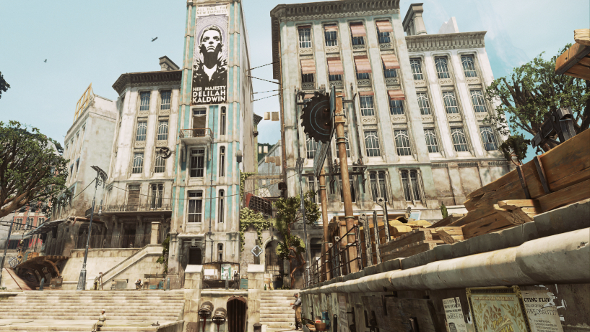
- Intentionality – provide information about the situation and allow the player to formulate a plan.
- Clarity – clearly mark the world and allow the player to navigate.
These two kind of come as a pair. Arkane want you to be able to read their environments without the UI, essentially. If you are heading to an exit, there will be exit signs. If a character tells you to go somewhere, they will give you actual directions instead of relying on a floating arrow.
- F**k ladders – you’d just fall to your death anyway.
One of the biggest causes of death in the first Deus Ex was apparently ladders. Ladders are responsible for some of my earliest gaming memories too, with hostages breaking their necks during failed Rainbow Six extraction efforts. Ladders are also boring and they stop you from accessing your toolset, locking you into an animation instead. Arkane would rather give you a glue gun and let you create a makeshift ledge, which is exactly what they’re doing in Prey.
- Improvisation – players like to be clever; let them use game systems to experiment and form their own solutions.
This value is accompanied by a picture of a Skyrim NPC with a basket over their head. This exploit of the game’s systems allowed players to rob NPCs blind without fear of being caught. Crucially, stuff like this makes players feel clever. It’s why in Prey you will be able to turn into a cup, then use an alien power to cause an explosion, propelling you skyward and onto an unreachable ledge.
- Consequences – players make choices that have meaningful emotional or mechanical consequences.
Whether it’s more rats scurrying in the streets because you left too many bodies lying around, or how Emily’s drawings would become dark and twisted as the body count racked up, Dishonored always did this well. Expect more stuff like this from Prey. For one thing, there will be a massive alien creature called a Nightmare that will stalk you through the space station, Talos 1, and it’ll track you down easier the more powers you have.
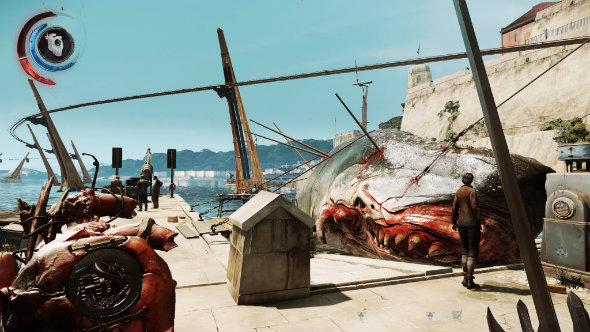
- Environmental storytelling – invite players to create stories through interpretation.
Dishonored 2 excels at this. You can rummage through someone’s apartment and get a real grasp of who they are, picking through notes and looking through their belongings. It’s amazing what you can tell about a person from their mattress.
- Object density – the world feels crafted, rich with objects and interactivity, but not cluttered.
This is another thing Dishonored 2 does really well. The world is filled with enough interactive objects to make it tactile, but it never gets in the way of navigating a space. Throw a sticky grenade at a door and watch it splinter into pieces – if you walk in during the aftermath, light fittings will be swinging, debris will be twirling through the air and the room’s small objects will be scattered.
- Break the patterns – players like to be surprised; avoid repetition in encounters and setups.
Arkane quote Lady Boyle’s last party from the first Dishonored for a jump off point here and I can’t think of a better example. It switches up a formula you’re already used to, letting you climb down from the ceiling and mingle with aristocrats in a social stealth situation instead. Dishonored 2 breaks things up with the ClockWork mansion and a later level that gives you a time manipulation device.

- Mood – all environments should serve a signature emotional tone.
This one is pretty self-explanatory, but you can identify Dishonored from any screenshot.
- Reuse of space – let the player return to areas that evolve over time, building investment in the setting.
Again, Dishonored and its sequel lean on this in one specific section of Dunwall. It’s also used to good effect in your hub, be it the Hound Pits Pub or the Dreadful Wale.
- Specialisation – no character should be good at everything.
Do you want to be super strong or extra agile?
- Grounded sci-fi – near future environment should feel convincing and cohesive, a careful balance of the familiar with the marvelous.
This last one is specific to Prey, which takes place in an alternate history where JFK was never assassinated.
